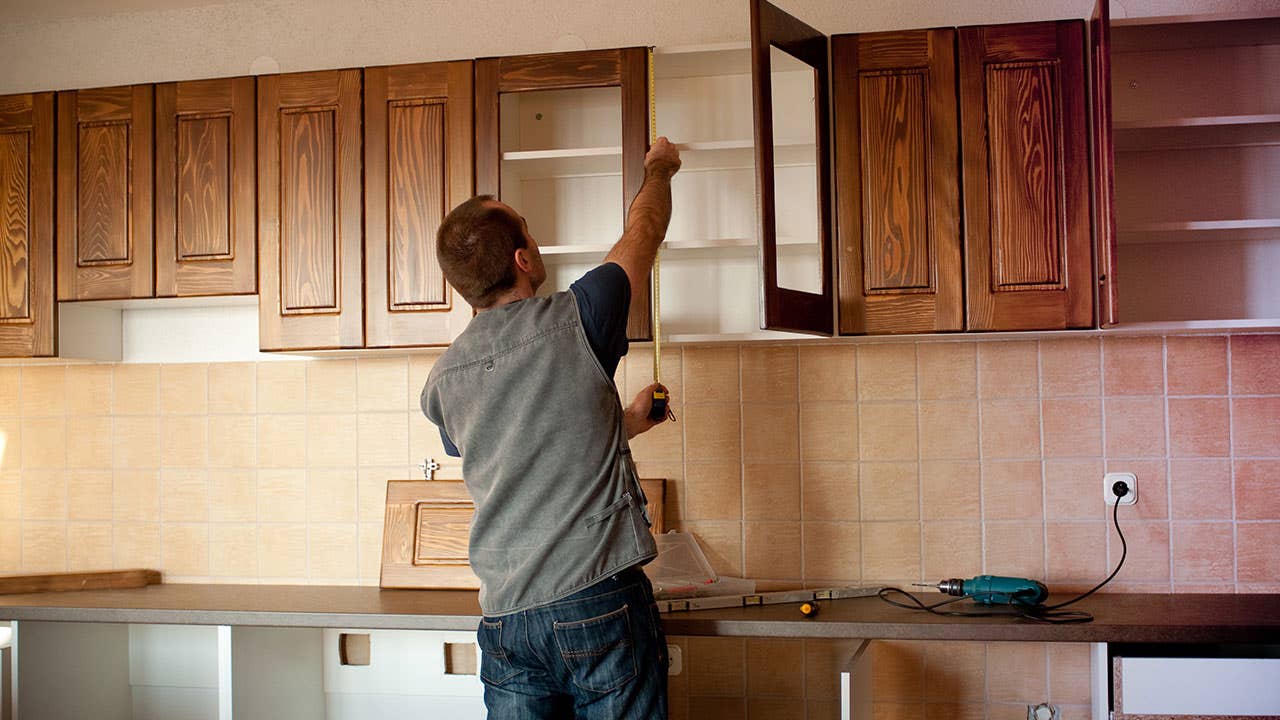
How We Make Money
The businesses whose offers you see on this website pay us. Unless our mortgage, home equity, and other home lending products are specifically prohibited by law, this compensation may have an impact on how and where products appear on this website, including, for example, the order in which they may appear within the listing categories. However, this payment has no bearing on the content we post or the user reviews you see here. We don’t include the range of businesses or loan options that you might have.

Our goal at Bankrate is to assist you in making more informed financial decisions. Although we follow stringent guidelines, this post might mention goods from our partners. Heres an explanation for . Bankrate logo.
Bankrate was established in 1976 and has a long history of assisting consumers in making wise financial decisions. We’ve upheld this reputation for more than 40 years by assisting people in making sense of the financial decision-making process and providing them with confidence regarding their next course of action.
You can rely on Bankrate to prioritize your interests because we adhere to a rigorous editorial policy. All of the content we publish is objective, accurate, and reliable because it is written by highly qualified professionals and edited by subject matter experts.
Our banking reporters and editors concentrate on the topics that matter most to customers: the best banks, the most recent rates, various account kinds, money-saving advice, and more, so you can handle your money with confidence. Bankrate logo.
You can rely on Bankrate to prioritize your interests because we adhere to a rigorous editorial policy. Our team of distinguished editors and reporters produces truthful and precise content to assist you in making wise financial decisions.
We value your trust. Our goal is to give readers reliable, unbiased information, and we have established editorial standards to make sure that happens. Our reporters and editors carefully verify the accuracy of the editorial content they produce, making sure you’re reading true information. We keep our editorial staff and advertisers apart with a firewall. No direct payment from our advertisers is given to our editorial staff.
The editorial staff at Bankrate writes for YOU, the reader. Providing you with the best guidance possible to enable you to make wise personal finance decisions is our aim. We adhere to stringent policies to guarantee that advertisers have no influence over our editorial content. Advertisers don’t pay our editorial staff directly, and we carefully fact-check all of our content to guarantee accuracy. Thus, you can be sure that the information you’re reading, whether it’s an article or a review, is reliable and reputable. Bankrate logo.
How we make money
You have money questions. Bankrate has answers. For more than 40 years, our professionals have assisted you in managing your finances. We always work to give customers the professional guidance and resources they need to be successful on their financial journey.
Because Bankrate adheres to strict editorial standards, you can rely on our content to be truthful and accurate. Our team of distinguished editors and reporters produces truthful and precise content to assist you in making wise financial decisions. Our editorial team produces factual, unbiased content that is unaffected by our sponsors.
By outlining our revenue streams, we are open and honest about how we are able to provide you with high-quality material, affordable prices, and practical tools.
Bankrate. com is an independent, advertising-supported publisher and comparison service. We receive payment when you click on specific links that we post on our website or when sponsored goods and services are displayed on it. Therefore, this compensation may affect the placement, order, and style of products within listing categories, with the exception of our mortgage, home equity, and other home lending products, where legal prohibitions apply. The way and location of products on this website can also be affected by other variables, like our own unique website policies and whether or not they are available in your area or within your own credit score range. Although we make an effort to present a variety of offers, Bankrate does not contain details about all financial or credit products or services.
This article was written in part using an internal natural language generation platform. Our editorial staff examined, verified, and revised the article.
- To obtain the best terms when comparing loan options to finance your next home improvement project, prequalify with multiple lenders.
- Planning is necessary when financing a home project, and prospective homeowners should weigh all of their financing options before choosing one.
- To avoid incurring significant debt, it is advisable to save money and pay for home improvement projects entirely out of pocket.
A home project is a major endeavor, regardless of whether you are getting ready to sell your house or you just want a makeover for a new season. How you’re going to pay for any home remodeling project is one of the most important questions you’ll have.
This is particularly true at the moment because inflation is at its highest level in decades, driving up the cost of everything. According to a recent Bankrate survey, the current state of the economy is causing 53% of Americans to postpone significant financial milestones, and 25% of them are forgoing home improvement projects.
It’s critical to plan ahead when it comes to financing your home improvement project in order to minimize additional expenses and potential debt. The best way to pay for a home upgrade is to set aside money for a particular project and use that money for it. That isn’t always feasible, though, and you might have to submit an application for financing instead.
Average cost of a home improvement
The average homeowner in the U.S. spends $18,000 in home renovations. However, this figure can fluctuate greatly based on the size of your home, type of project you choose, timing and location.
- Because of the scarcity of supplies and the high cost of renovations, over half of homeowners intend to put off their projects until 2024.
- Because of inflation, 271 percent of homeowners are now doing DIY home improvement projects rather than paying a professional to do it for them in order to save money.
- More than 60% of homeowners intend to use their checking or savings account to cover the cost of home improvement projects in 202023.
- In addition, credit cards, home equity loans, and personal loans are common ways to finance home renovations, making up 37 4%, 8. 6% and 8. 5% of all financing options, respectively.
- Three of the main reasons homeowners are renovating in 2023 are to make their living spaces better, fix broken items, and increase safety.
- In 2021, over one-third of homeowners said they had overspent on their home improvement projects. Conversely, 22.7 percent of homeowners claimed they didn’t have an initial budget.
- The percentages of interior room remodels, home system upgrades, and outdoor upgrades that were completed by homeowners in 202022 were 2070%, 2063%, and 2054%, respectively, of all home renovation projects.
- With a median project cost of $15,000, kitchen remodels are the most common and costly home improvement.
- With a median cost of $9,000, bathroom remodels rank as the second most expensive home improvement project.
7 best ways to finance home improvements
Home improvement projects can be expensive and often require financing. Fortunately, you have a few choices to choose from in order to determine which is best for your circumstances.
The most secure way to finance your home improvement project is to set aside a sizeable sum of money. This option might require you to put off starting your project until later if you don’t currently have a sizable amount of money saved. However, it also means that after your home renovation is complete, you won’t have to worry about repaying a loan or a sizable credit card bill.
The type of renovation you’re doing and the size of the project will determine how much you need to save. It could be wise to start small and take on less expensive projects first if you intend to finance the entire project with savings. By doing this, you can avoid taking on more than you can handle and ending up spending more money than you had planned.
| Benefits | Drawbacks |
|---|---|
| No money to have to pay back | Saving can take more time or delay the start |
| No accruing interest | The project may cost more than expected |
| Your credit score will not be impacted | You may not have time to save if the repair is an emergency |
Home improvement loans
Banks, credit unions, and several online lenders offer unsecured personal loans for home improvement. You can apply for these loans without using your home as collateral because they are unsecured. Your credit score plays a major role in determining your eligibility and interest rate. Funding occurs fast; many lenders deposit money directly into your account in as little as a day after you accept the terms.
Compared to home equity loans or home equity line of credit (HELOCs), home improvement loans usually have shorter payback terms, smaller loan amounts, and fewer fees. Most home improvement loans only have a maximum term of 12 years. Additionally, home equity loans have larger maximum loan amounts of $750,000, whereas home improvement loans have much smaller maximum loan amounts of $100,000. The best use cases for home improvement loans are usually small to medium-sized renovations like remodeling your kitchen or bathroom.
Home improvement loans are usually more expensive because they are unsecured loans, particularly if your credit is fair or below average. Additionally, some lenders charge fees for processing applications, making late payments, and even paying off a remodel loan in full. But even if you are unable to make the payments, you won’t lose your house.
Compare the top providers of home improvement loans for affordable interest rates, reasonable fees, flexible repayment terms, and prompt payouts before applying for a personal loan for home renovation.
| Benefits | Drawbacks |
|---|---|
| Funding is generally fast (within a few days) | Lower maximum borrowing amounts. |
| Many lenders charge no or few fees for home improvement loans. | Shorter repayment periods than a home equity loan |
Home equity line of credit (HELOC)
With a home equity line of credit (HELOC), you can get a better interest rate than you would with an unsecured personal loan because the loan is secured by your house. In addition to being revolving credit, a HELOC allows you to take out as much credit as you need, up to your borrowing limit. Owing to their adaptability, HELOCs are ideal for larger, more extended projects.
If you don’t make payments on time, your home may be foreclosed upon since it will be pledged as collateral. Additionally, the majority of HELOCs have variable interest rates, which means that your payments may go up in response to changes in the market and Federal Reserve policy.
You need to own your home with at least 15% to 20% equity in order to borrow against it. Your loan-to-value ratio, or LTV, is determined by the value of your home, the amount still owed on your mortgage, and your credit score. It determines how much you can borrow.
| Benefits | Drawbacks |
|---|---|
| Interest may be tax deductible. The Tax Cuts and Jobs Act allows home equity borrowers to deduct interest paid on home equity products if the product was used for home improvement. | HELOCs come with variable interest rates, meaning that your interest rate can change depending on the decisions of the Federal Reserve. |
| HELOCs have flexible repayment options for up to 30 years depending on how much you borrow. | It can be easy to overspend with a line of credit. |
Home equity loan
You could apply for a home equity loan—also known as a second mortgage—instead of a HELOC. This loan has a one-time payout that you can spread out over several years with fixed monthly payments.
Compared to home improvement loans, home equity loans have substantially higher borrowing limits and repayment schedules. Additionally secured loans are those in which you pledge your house as security.
A home equity loan doesn’t require you to be concerned about changes in the market, unlike HELOCs. For the duration of your loan, you make the same monthly payment after locking in your fixed interest rate.
Large to medium-sized projects are the best candidates for home equity loans. Prior to borrowing, you must ascertain the precise amount you require; however, you are able to borrow more and extend the repayment period.
| Benefits | Drawbacks |
|---|---|
| Fixed interest rates ensure your monthly payment will never change. | You must have a good credit score to qualify for the best rates. |
| Loan interest is tax deductible if you use the funds for home improvement. | If your property value declines, you could go upside down on your mortgage. |
With a cash-out refinance, your existing mortgage is replaced with a bigger loan that comes with a new interest rate. A cash-out refinance allows you to keep the difference between your old mortgage and the new loan, so you could use the extra money for home upgrades.
If a homeowner qualifies for a better interest rate than they currently have on their mortgage and would not be able to afford an additional monthly loan payment without refinancing, a cash-out refinance is a good option. A cash-out refinance is best used for smaller projects and emergency repairs because it has additional costs and is dependent on the condition of your current mortgage.
If you’re thinking about refinancing, consider the drawbacks carefully. Taxes, origination fees, appraisal fees, and other closing-related expenses must be paid. You will be prolonging the life of your loan if you don’t refinance your mortgage for a shorter term, which will make it take longer for you to pay it off. Refinancing is generally only a good idea if you are able to get a lower interest rate than you currently pay.
| Benefits | Drawbacks |
|---|---|
| You can lower your monthly mortgage payment by refinancing. | The amount you owe will increase with a cash-out refinance, putting you deeper in debt. |
| If you have an adjustable-rate mortgage, you can change it to a fixed-rate loan. | You need to have good to excellent credit to qualify for cash-out mortgage refinancing. |
Using your credit card could be the best option for home improvement financing if you’re doing small home improvements like installing a new closet system or updating your bathroom vanity.
Some cards are interest-free for the first few months. You might be able to finance small home upgrades with a 0% introductory APR card without ever having to pay interest. If your credit card offers cash-back benefits, you could earn more cashback the more you spend on renovations because many cards come with fantastic rewards.
Using a credit card to make significant purchases for home improvement carries some risks. In comparison to other home remodel loan options, you may be subject to exceptionally high interest rates if you are unable to pay off the remaining balance before the introductory offer expires. You will have to pay back the full amount by your next billing cycle, which is typically a month, if you use your regular card instead of an introductory offer card, in order to avoid paying interest. With variable interest rates, your interest payments may increase in response to changes in the market.
It’s worthwhile to investigate store-issued credit cards from establishments like IKEA or Lowes if you intend to use a credit card for home improvement projects. When used to make purchases at those particular stores, these cards typically offer advantages.
| Benefits | Drawbacks |
|---|---|
| Many cards offer rewards programs to borrowers that benefit you the more purchases you make on the card. | You will have to pay back what you borrow within the billing cycle to avoid paying high interest. |
| You can take out the amount you need as you need it, which can keep you from getting into more debt than necessary. | It is easy to overspend and get in a cycle of debt. |
Government loans are determined by need and geography, so in order to be approved, you must both meet the requirements for eligibility and have the renovation you want to do approved. Although receiving approval for a government loan may be more difficult, those who are granted one could save money on borrowing expenses like interest and insurance.
One type of government loan is a HUD Title I Property Improvement Loan. It lets you borrow up to $25,000 without having any equity in your home and is a good home repair loan option if you’ve recently purchased your home and need to make upgrades. However, the money must go toward renovations that improve the livability of the home, and some upgrades may not qualify.
Appropriate renovations include things like installing appliances and fixing structural issues. Additionally, your loan may be used to pay for building permit fees, inspection fees, appraisal fees, and architectural and engineering costs. Pools and outdoor fire pits are examples of luxury items that are not covered by these loans. Additionally, you are not allowed to use this loan to cover previously completed work.
Additionally, Veterans Affairs provides cash-out refinance loans, which let you take out cash on your home’s equity by refinancing a conventional mortgage. The VA loan guarantee is the “insurance” it offers to your lender in the event that you are unable to make payments.
Because the government insures the lender against possible loss, government loans typically have better terms and lower interest rates than regular loans. Exact rates vary and depend on the lender.
| Benefits | Drawbacks |
|---|---|
| You are guaranteed to work with a legitimate lender. | You must use the loan money for projects that increase the property’s “livability”, meaning that you cannot use the money for luxury items. |
| You do not necessarily have to be the homeowner to apply for these loans. The Title I loan allows long-term tenants to apply. | Each government-issued loan comes with its own eligibility requirements. For the Title I loan, you need a debt-to-income ratio of 45% or less. |
Financing for emergency home repairs
Any of the aforementioned options are available to you if you require assistance paying for urgent repairs to your home. Apart from that, you have the option to file a claim with your homeowners insurance.
The average $1,000 high deductible associated with homeowners insurance can be prohibitive for some. Indeed, according to a recent Bankrate survey, 57% of Americans believe they wouldn’t be able to pay for a $1,000 emergency bill out of pocket. Furthermore, not all emergency repairs are covered by insurance, and processing insurance claims may take some time.
A loan can be your best choice if you don’t have the time to wait for an insurance claim to be processed. For minor repairs, credit cards and home improvement loans might be the best options; however, larger repairs might call for a home equity loan, or HELOC.
In 2021, homeowners paid $2,321 on average for urgent home repairs. The precise cost is determined by the nature of the repair, the cost and accessibility of labor and materials, and other factors. Examples of urgent repairs include termite damage, which typically costs between $600 and $3,000, and water damage, which typically costs more than $3,300.
Financing for emergencies with bad credit
You might be concerned about how you’ll be able to get the money you need if you have bad credit and an urgent need for home repairs. Fortunately, some lenders cater to people with bad credit by offering loans specifically for them.
To help you pay off your current debt and streamline your finances, it could be a good idea to look into a debt consolidation loan if you’re concerned about taking on additional debt. With these loans, you can pay off several debts with a single payment. With this choice, you can locate a loan with fixed payments and a lower interest rate. Loans for debt consolidation are accessible to anyone, regardless of credit history.
Financing a home project takes planning. Homeowners should weigh all of their options and select the financing option that best suits their needs in terms of both project and budget. Speak with several lenders when considering your options for a loan in order to negotiate the best terms.




FAQ
Are renovation loans a good idea?
For homeowners who want to make significant or minor improvements to their property, home improvement loans are a useful tool. They are an effective method to make the payments more manageable because they have fixed interest rates and allow you to borrow a sizable lump sum all at once.
What credit score do you need to get a renovation loan?
After the first mortgage is paid off, the extra money will be used to finance the remodeling project at home. Normally, 620 is the minimum credit score needed for this, but some lenders might accept an applicant with a score of 580 or higher.
Can renovations be loans?
If you are renovating your house at a low cost, you might want to think about using your credit card, savings, or overdraft facilities. But, if the cost of your renovation is significant, it might be best to take into account a renovation loan with more affordable monthly installments, lower interest rates, and lower upfront costs.
Is cash better than loan for home renovation?
When undertaking smaller projects or renovations that fall well short of your cash reserves, it makes sense to use cash. This option is riskier if you have barely enough money to cover the budget because you might not have enough for unforeseen expenses or you won’t have a safety net for other emergencies unrelated to your renovation.
Read More :
https://www.bankrate.com/loans/home-improvement/how-to-pay-for-home-improvements/
https://www.nerdwallet.com/article/loans/personal-loans/how-home-improvement-loans-work
